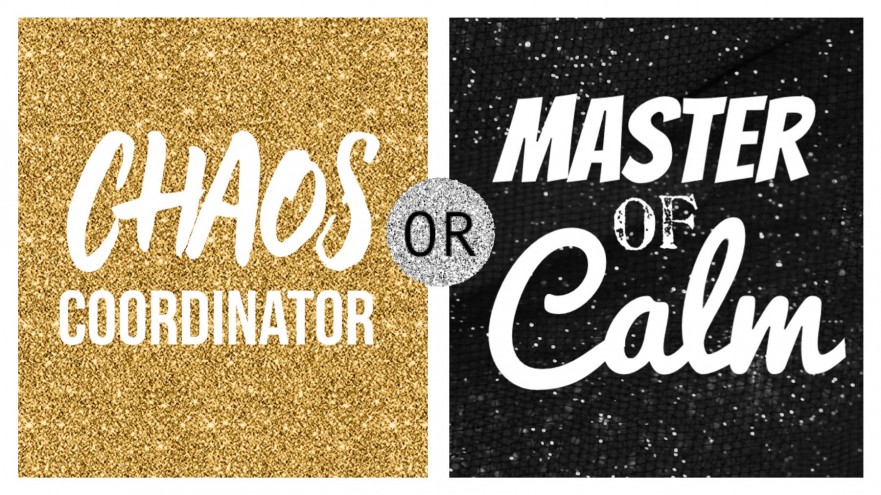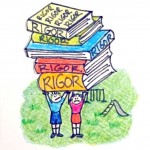There’s a funny teacher shirt that always makes me smile. It has the words “Chaos Coordinator” blazon across the front in fancy glitter writing. Being a teacher sure feels like that, right? (especially if you teach preschool or kindergarten!) But this blog is not about coordinating chaos. It’s about strategically orchestrating calm.
My first teaching position was self-contained, special education for students in kindergarten to second grade with various developmental disabilities. I was hired mid-year to take over the classroom of a master teacher who moved overseas. She had incredible programs going in that room: innovative assistive technology, mainstreaming for all the kids, a research study with a local university, and the challenge of merging a six-day specials schedule with a five-day therapy schedule. (Yes, that made every weekday different!) She had these elaborate chart paper schedules for every possible day that could happen: Monday, Day 1; Tuesday, Day 2; Wednesday, Day 3; Thursday, Day 4; Friday; Day 5; Monday, Day 6; Tuesday, Day 1…you get the idea. Every single day seemed brand new, and I felt utterly lost. It was like stepping into a full-scale Broadway show as a sixth-grade amateur actor.
Did I struggle? Oh, yes. I tried really hard to keep that production going! I would wake up at 5:00 in the morning, arrive at school by 6:00, stay until 9:00 (when the janitor locked up), drive home, shower, go to bed with wet hair, and repeat it the next day. I had the school’s alarm code so I could work every single Saturday. The principal stopped by regularly to check on me and warn about burn out. I persevered with unwavering determination.
I started to notice something about the kids. There were days when they were crazy. And there were days when they were calm. How could I know what to expect? I desperately wanted to unravel this mystery: What made them crazy? What made them calm? What could I do to sway them one way or the other?
One especially crazy day, it finally hit me: I was the crazy and I was the calm. I thought about the past few weeks. On days when I was frantic and overwhelmed, I tended to bounce around the classroom in a disorganized haze. The kids bounced around, too. On the days when I was organized and calm, the kids seemed more centered, relaxed, and connected to staff and peers. This discovery was magical. I realized that I was creating the climate of the classroom. My stress (or lack of stress) was passing straight to my students.
There is research about how stress passes from parents to children, affecting their brain development, ability to focus, and retention of information. Epigenetics research even indicates that childhood stress can alter genes, turning genes on and off to prepare the child for potential threats. These genetic changes can even pass down to future generations! I think this body of stress research has important implications in the classroom. Could teacher stress affect the learning and focus of students? This seems like a really important question. If I add up my years of informal observational data, I see dramatic connections between my state of mind and the daily outcomes of my students. Being organized and calm makes a HUGE difference.
I’ve been experimenting with this concept at home recently. With two kids under five, my family has some hectic mornings. To make things harder, my kids tend to be their worst possible selves during this time. They are prone to meltdowns, refusals, and dramatic expressions of their own opinions. The stress builds and builds until we finally pack them into the car—typically late. My husband and I hate this, so we’ve been thinking about ways to bring calm back to our mornings. About a week ago, we decided to get up 30 minutes earlier so we could be completely dressed and organized before the kids wake up. Instead of bouncing around getting ourselves ready and organized, we can focus on the kids with quality time and attention. And guess what!?! The past few days have been a thousand times better. Just like the classroom, I have the power to orchestrate calm in my own house! Children deeply rely on adults for cues about their own self-regulation. Modeling calmness is a powerful tool for anyone working with kids.
I think these ideas are important for Arizona policy makers during a time when classrooms are overcrowded, teachers are over-committed, and schools are still dramatically under-funded. Working conditions are incredibly stressful for Arizona teachers. How does the current educational climate affect the learning of Arizona students? Would it matter if lawmakers provided adequate funding to decrease class size, lower teacher workload, improve campus resources, and eliminate the need to beg parents and online organizations for supplies?
This teacher says YES.
We all have a role to play. If you are a teacher, you have the choice to a be MASTER OF CALM instead of a chaos coordinator. And if you are a policy maker, you can take a stand this coming legislative session to improve per pupil funding for kids in Arizona. Let’s all take a second and envision THAT! I can already feel the calm sinking in.
What are your observations about how adult stress or calm affects kids? Do you think this is an important topic for educators?










Comments 2
I think this is a very important topic. I notice when I am calm and go with the flow, my seniors are the same. If I let my stress take over, there is a noticeable buzz in the classroom. I even notice it with the staff. I love this and this it’s a very valuable thing to discuss as it directly affects the social and emotional behavior of our students and those around us.
So interesting to hear that high school students are just as susceptible to contagious stress as young kids. I have always wondered if this was true for older kids as well! This makes me even more convinced that we need to take reasonable steps to reduce teacher stress in AZ (and please, don’t let anyone reading this comment think that I’m asking for more PD on reducing stress—I can’t stand sitting in those PD’s when I have so much work to do!)